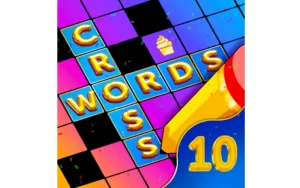In the world of social gaming, few titles have captured the hearts of players like City Ville. Developed by Zynga, this city-building game was an instant hit when it was released on Facebook in 2010, and it quickly became one of the most-played games on the platform. Even though the game was officially discontinued in 2015, its legacy continues to influence the city-building genre. With its easy-to-understand mechanics and engaging gameplay, City Ville offered a unique blend of fun, creativity, and strategic planning.
In this article, we’ll explore the game’s features, what made it so popular, and how players still remember and enjoy the legacy of City Ville.
What is City Ville?
City Ville was a free-to-play social game in which players could build and manage their own virtual city. Unlike traditional video games, which might require long, intense sessions, City Ville was designed for casual play. Players managed their cities over short periods of time while interacting with friends. The game allowed players to create their dream cities, whether they wanted to design a bustling metropolis or a peaceful rural town.
Key Gameplay Features:
- Building Your City:
Players began with a small plot of land and had to build structures like houses, businesses, and factories to grow their city. As the game progressed, players could expand their territory, add new buildings, and improve their cities’ infrastructure.
- Resource Management:
Managing resources like money, energy, and goods was essential to the game. Players needed to balance the production of goods with the demands of their citizens, ensuring the city ran efficiently and could support its growing population.
- Interaction with Friends:
One of CityVille’s standout features was its integration with Facebook. This social aspect allowed players to visit their friends’ cities, trade goods, and help one another. This created a strong sense of community and competition, making the game even more enjoyable.
What Made CityVille So Popular?
City Ville became iconic for several reasons, some of which still resonate in modern city-building games. Here are a few factors that contributed to its immense popularity:
Casual Gameplay
Unlike many games that required long hours of play, City Ville was designed for casual gaming sessions. Players could hop into the game, complete a few tasks, and log off when they were done. This made it accessible to a broad audience, from young players to older adults, as the game didn’t demand hours of attention.

Creativity and Customization
CityVille allowed players to design their cities with complete freedom. From choosing where to place buildings to deciding on the type of architecture, players could express their creativity in ways that made each city unique. This freedom to design and build was a major draw for many players.
Constant Updates and New Features
Zynga kept CityVille fresh by regularly adding new content, including buildings, decorations, events, and challenges. These updates kept players engaged and excited to see what was coming next. The constant stream of new additions ensured the game stayed fresh and relevant in a fast-moving gaming landscape.
Social Integration
CityVille’s integration with Facebook allowed players to connect with friends, trade goods, and visit each other’s cities. This sense of community created a social environment that encouraged collaboration and competition, enhancing the gaming experience.
Legacy of CityVille: How It Still Influences Games Today
Although CityVille was officially discontinued in 2015, its impact on social and casual gaming is still felt. The game set the stage for many following city-building and simulation games, influencing developers and shaping the genre. Here are a few ways CityVille’s legacy continues to thrive:
City-Building Games
City-building games have become a popular genre in mobile and PC gaming. Games like SimCity, Farmville 2: Country Escape, and Township all carry elements inspired by CityVille’s gameplay. From resource management to the importance of balancing city needs, many modern games have been drawn from the CityVille playbook.
Social Games
CityVille was a pioneer in integrating social media into gaming. Its success inspired developers to build games that connected players through social networks. Sharing achievements, visiting friends’ cities, and helping others are now standard features in games like Candy Crush and FarmVille, which still thrive today.
Microtransactions and In-Game Currency
CityVille popularized in-game currency and microtransactions, where players could buy virtual goods and speed up their progress. This model has become a standard in many online games and is still prevalent in free-to-play titles across various platforms. Although some players are critical of this model, it remains a significant part of gaming economics.
Conclusion
CityVille was a groundbreaking game that changed the way people experienced social gaming. With its easy-to-understand gameplay, the ability to design unique cities, and a vibrant online community, it captured the hearts of millions of players. While the game itself may no longer be available, the concepts it popularized continue to influence the gaming industry, making it a lasting part of gaming history.
If you were a fan of City Ville by Zynga, you may still find joy in playing newer city-building games with the same spirit of creativity and strategy. Whether you’re a veteran or new to the genre, the legacy of CityVille lives on, and the possibilities for building the perfect city are still endless.









